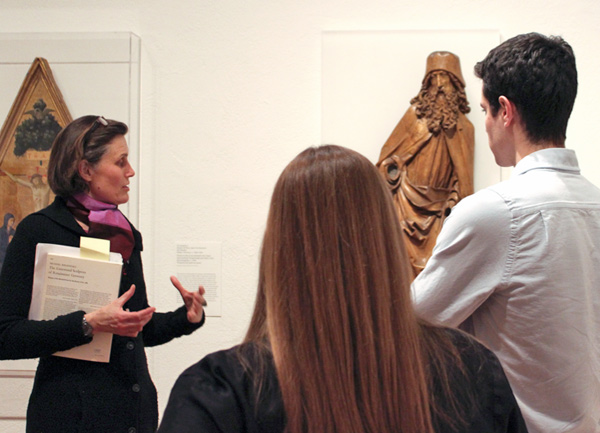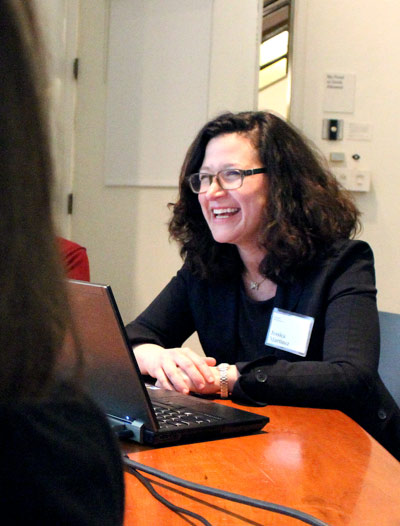Most people who come to the Harvard Art Museums to view a Rembrandt painting are hoping to look at the front of the work, to admire the artist’s composition. But when Andrew Richardson, Assistant Professor of Organismic and Evolutionary Biology at Harvard, brought his undergraduate class to the museums, he directed students to inspect the back of an oak board that Rembrandt painted on. Students in his course, The Science of Living Systems 25: Trees, Forests, and Global Change, observed particularities of wood anatomy in a number of original artworks. Such details can tell us how and when a work was created, which is valuable information for understanding the work, determining its origin and condition, and detecting forgeries.
This is not your average museum-going experience. It is one of the many teaching moments made possible by our Division of Academic and Public Programs (DAPP), under the leadership of director Jessica Levin Martinez. “We have these wonderful opportunities to deepen what’s happening in the classroom,” said Martinez. There is great potential for the museums’ collections to enrich research, teaching, and learning, with support from knowledgeable museum staff. DAPP staff helps professors select objects that move their conversations and arguments forward, connecting the museums’ resources to academic disciplines that range from applied mathematics to Romance languages.
When developing new programs, for those on campus and beyond, Martinez asks, “How is what we’re doing—for example, through technology or published research—offering a route of access into the collections?”
DAPP also trains student guides like Isabel Hebert, a comparative religion concentrator at Harvard. “There are so many dimensions of learning that can be enhanced by art and by objects,” said Hebert, who recently completed her senior thesis on religion and art. For instance, when looking at Greek funerary vases for a course based on secular life in Greece, she was able to connect it to her studies in religion. She could see how coursework can come to life at the Harvard Art Museums. “Now I go into the galleries and see something in a case and think about it in a different way,” Hebert said.
When DAPP brought in storyteller Xanthe Gresham for a three-day residency at the museums, they asked Deborah Foster, Senior Lecturer on Folklore and Mythology, if she would be interested in having Gresham visit her freshman seminar. Foster’s students were enthralled. Gresham performed part of the Shahnama, a Persian epic poem featured in the teaching gallery installation Word and Image in Persian Painting. Afterward, Foster instructed her students to visit the museums to see the manuscript firsthand. “Objects and performance are both live in their own way,” Foster said. “When students come into contact with three-dimensionality, there is an extended interaction that comes with that experience. From that, there are tools that students can take with them. It enables them to think more complexly and deeply, which is incredibly helpful to you as an instructor and to the students as learners.”
It’s this synergy between academic courses and the museums that drives DAPP. “When I meet with faculty,” Martinez said, “I really try to understand the class, what it is they’re trying to achieve, and what they need—whether it be skills, content, or to create an atmosphere for their students so that a different type of discussion ensues. Whatever their key goals, we figure out how to make the collections work for them.”
To learn more about Andrew Richardson's class visit to the museums see harvardartmuseums.org/richardson.





